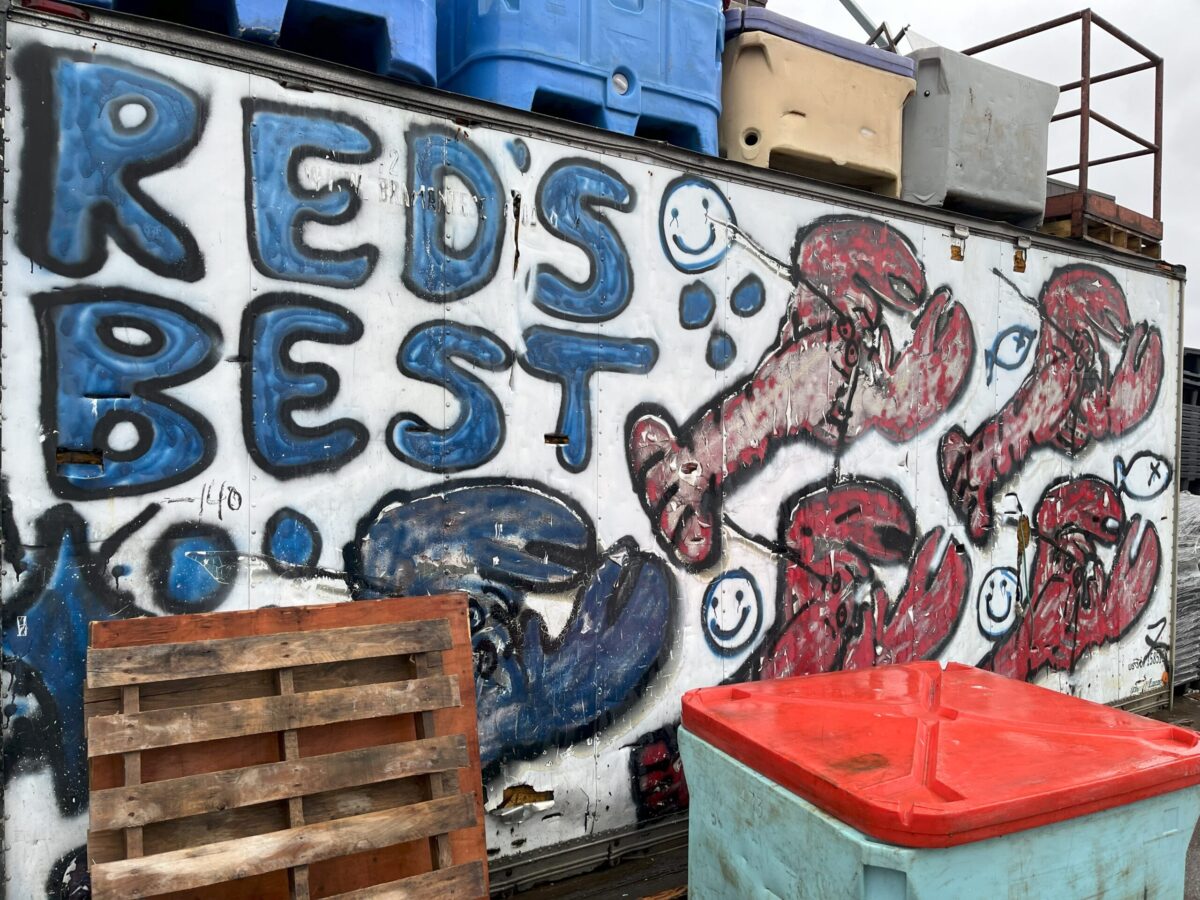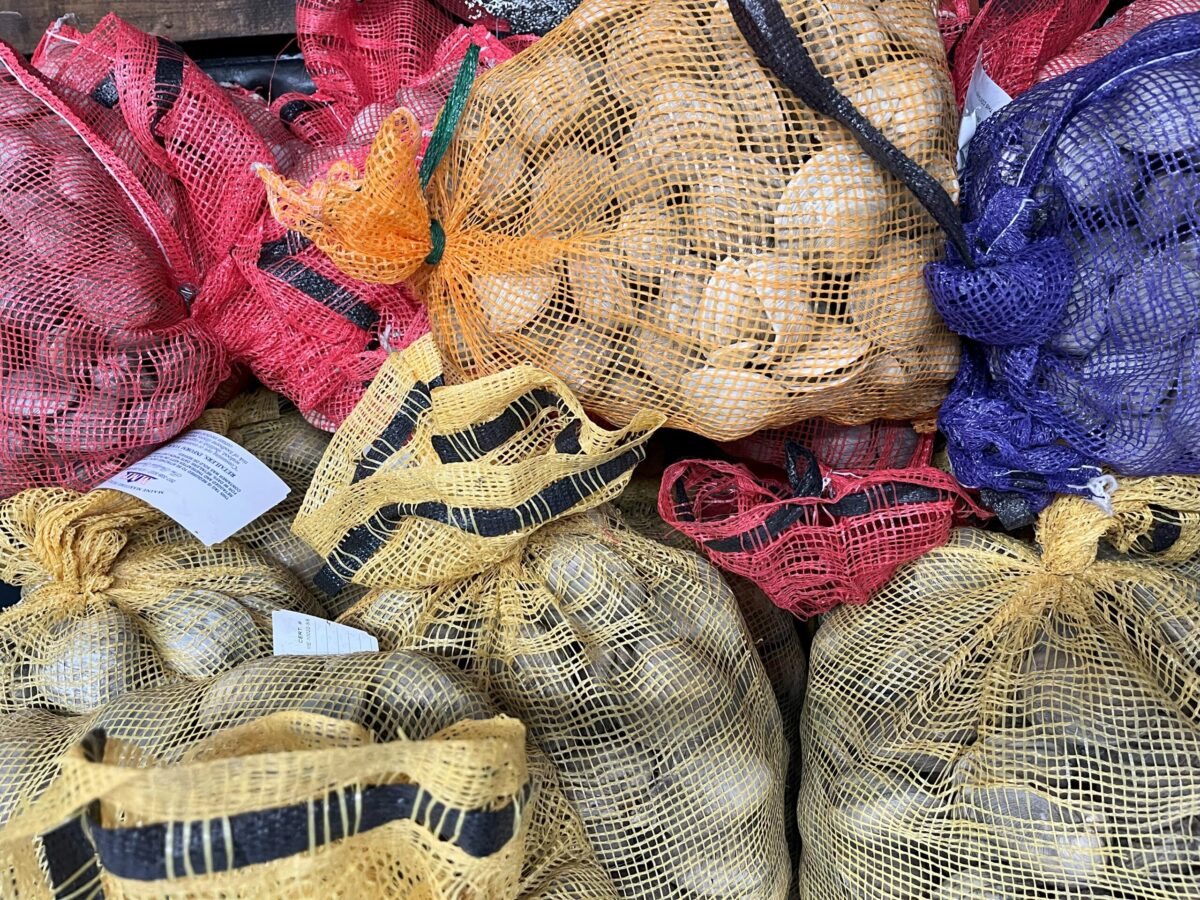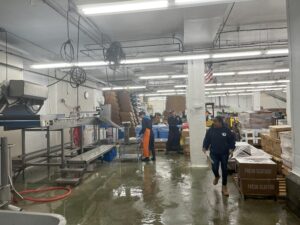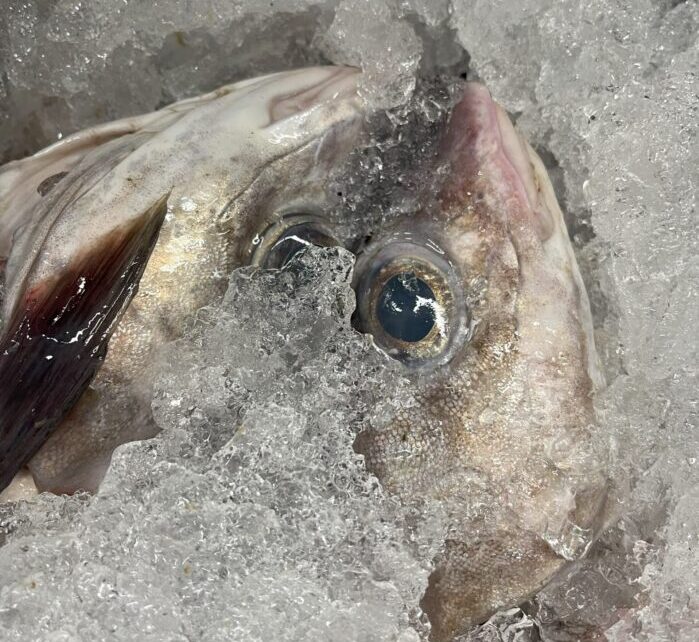Farm to Fork Profile: Red’s Best Flips the Script on Supply and Demand for Local Seafood

For Jim LaChance, executive chef at MIT, the best part about working with Boston-based seafood company Red’s Best is the mystery fish. Twice a week, the team receives a fish delivery whose contents are unknown until it arrives in the kitchen. “I’m a person who doesn’t like to be bored,” he says. “So I really like this model of getting the fish and not knowing what it’s going to be.”
It’s a model that works well for selling New England seafood to institutions like colleges and universities, says Jamey Lionette, Red’s sales director, as a group of Bon Appétit employees stares down a fishing tote of just-caught haddock at their facility on Boston’s historic Fish Pier. Jamey is showing us around Red’s headquarters in downtown Boston, where the fishing boats and forklifts are wedged in between luxury apartment buildings, high-end shopping, and shiny new office towers. At the pier, it’s the same as it ever was, but with fewer boats.
Red’s Best was founded in 2008 by Jared (Red) Auerbach, a fisherman and entrepreneur who’d worked on boats in Alaska and Cape Cod and had noticed how small-scale fishermen were struggling to manage shifts in the regulatory landscape and in the ocean itself. In the early 2000’s, New England’s fishing fleet was shrinking, and the fishermen who remained needed to find ways to adapt to the changes.

Bagged and tagged clams at Red’s Best in Boston.
Red’s model is aggregation. The company works with a network of hundreds of fishing vessels up and down the East Coast, mostly concentrated in Massachusetts. They guarantee a price for the fish, and when a vessel comes into port, Red’s buys the entire catch and aggregates it with what other boats in the network are landing that day. They process the fish at their Boston facility and handle shipping as well, allowing for what they call an “unbroken chain of custody.”
Their proprietary technology allows them to upload the details of the catch, like the name of the boat and the fisherman, when it was caught and where — that can then be easily seen via QR code by consumers who are increasingly asking for transparency and traceability in the seafood supply chain.
One of Red’s key strategies, explains Jamey, is to “let the supply drive demand, rather than the other way around.” Depending on the season, the weather, and the boats that are out on the water, the fish that comes is always in flux, but the sales team works to move whatever product boats are landing. This works especially well with high-volume buyers like Bon Appétit, he says.
“In the New England fisheries there is a lot of high-volume fish that changes on a daily basis,” Jamey explains. “There could be 800 pounds of haddock one day and 80 pounds the next.” These natural fluctuations in supply make it hard for high-volume buyers to plan for specific species in advance, especially if they’re trying to support local fisheries.

Workers at Red’s processing facility in Boston.
Which brings us to mystery fish — aka scrod. While confusing to folks outside of New England (there is no fish species called scrod), scrod was historically a word used to simply describe the catch of the day. In New England, where groundfish like cod, haddock, flounder, hake, and other bottom-dwelling species dominate the total catch, scrod was often either cod or haddock. Red’s scrod could be any number of species coming through the door — whatever is plentiful. There’s less cod and haddock these days, and it’s interspersed with lesser-known species like fluke, skate, cusk, and scup. Warming waters means Massachusetts fishermen are also seeing more black sea bass and other species commonly found in the Mid-Atlantic.
Instead of ordering specific species, Jamey encourages the chefs to set their needed volume — and they’ll receive that amount of whatever species there’s a surplus of that day. “It’s a win-win,” says Jamey, because universities can lock in a price and maintain their budget while supporting fishermen from the region, and Red’s can offer fishermen a stable price for their catch in a notoriously volatile industry.
Working with the catch of the day can be challenging at first, says Akeisha Hayde, director of culinary operations at MIT. But it’s also a teaching moment for both staff and guests, she says. “For our staff, it exposes them to things they’re not used to, and they get that culinary insight.”
Jamey agrees. “What I’ve seen over the years at the schools is that when you’re cooking fresh fish caught locally, you take pride in cooking and serving that,” he says. “There’s extra love in that preparation. It makes the culinary team look like heroes.”

Fish of the day!